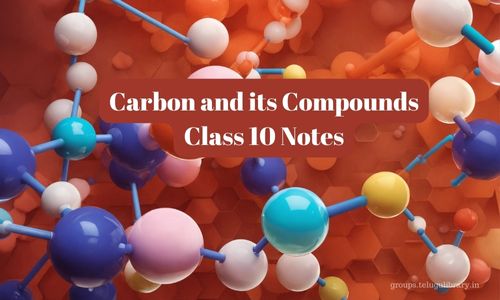Carbon and its Compounds Class 10 Notes…
Introduction
Carbon is a fascinating element that serves as the foundation of organic chemistry. What makes carbon so unique is its ability to form long chains and intricate structures. This quality allows for the existence of an astonishing variety of organic compounds, which are compounds primarily composed of carbon and hydrogen, although they may also incorporate other elements.
Covalent Bonding in Carbon Compounds
When it comes to bonding, carbon prefers to form covalent bonds by sharing its electrons with other elements. Its special characteristic of tetravalency, possessing four valence electrons, grants carbon the ability to create stable covalent compounds. This versatility plays a significant role in the diversity of carbon compounds found in nature.
Carbon and its Compounds Class 10 Notes..
Versatility of Carbon
Carbon’s versatility shines through as it can form not only single bonds but also double and triple bonds with other carbon atoms. This unique ability paves the way for the creation of numerous compounds with varying properties. The capacity of carbon to bond with itself and a plethora of other elements leads to the vast spectrum of organic compounds found in the world around us.
Functional Groups
Zooming in on the molecular level, functional groups are specific collections of atoms within a molecule that dictate its chemical properties. These groups play a crucial role in determining how a compound behaves and interacts with its surroundings. Examples of functional groups include the hydroxyl group (-OH), the carboxyl group (-COOH), and the amino group (-NH2).
Homologous Series
Within the realm of organic chemistry, we encounter homologous series. These series are composed of organic compounds that share the same functional group but exhibit a gradual increase in molecular structure. Despite their structural differences, members of a homologous series display similar chemical behavior, making them an intriguing area of study.
Isomerism
When two or more compounds share the same molecular formula but possess distinct structural arrangements, they are called isomers. Isomers can be further categorized into structural isomers, which vary in the arrangement of their atoms, and stereoisomers, which differ in their spatial arrangements. Exploring isomerism brings forth a deeper understanding of the intricacies of carbon compounds.
Carbon and its Compounds Class 10 Notes..
Nomenclature of Carbon Compounds
Providing names to organic compounds follows the rules established by the International Union of Pure and Applied Chemistry (IUPAC). These naming conventions hinge upon identifying the longest continuous chain of carbon atoms in the compound and acknowledging the presence of any functional groups. By adhering to these guidelines, chemists can accurately communicate the characteristics of carbon compounds.
Sources of Carbon Compounds
Carbon compounds can be discovered in a wide array of sources, including living organisms, fossil fuels, and various industrial products. Nature showcases the diversity of carbon compounds through the composition of plants and animals. Delving into these sources allows us to better comprehend the abundance and importance of carbon in our world.
Chemical Properties of Carbon Compounds
Examining the chemical properties of carbon compounds reveals intriguing insights. Combustion, for instance, refers to the burning of carbon compounds in the presence of oxygen, resulting in the creation of carbon dioxide and water. Additionally, oxidation involves either the addition of oxygen or the removal of hydrogen from a compound. These chemical reactions contribute to the dynamic nature of carbon compounds.
Important Carbon Compounds
A handful of carbon compounds deserve special mention due to their significance. Methane (CH4), the simplest alkane, holds a pivotal role in various industrial processes and energy production. Ethanol (C2H5OH), a commonly encountered alcohol, finds applications in both industry and leisure. Ethanoic acid (CH3COOH), a familiar carboxylic acid, serves as a critical component in numerous everyday products. Understanding the properties and characteristics of these important carbon compounds sheds light on their numerous applications.
By gaining a deep understanding of the properties, reactions, and behavior of carbon compounds, we pave the way for further exploration in the captivating field of organic chemistry. This knowledge serves as the building block for future studies in the realm of chemistry and its related disciplines.
More Content:
Indian constitution New challenges Notes With Questions and Answers
“Distinctive Features of Indian Federalism: Student-Friendly Question & Answers”
What are Fundamental Duties class 9-Question and Answers
What do you mean by Directive Principles of State Policy?
Understanding Fundamental Rights in the Indian Constitution – Exam Study Material
“Tribute to Sarvepalli Radhakrishnan: The Philosopher-President Who Shaped India’s Future”
What is India’s uniform civil code? History of Uniform Civil Code India and Questionnaire
7th schedule of constitution of India
